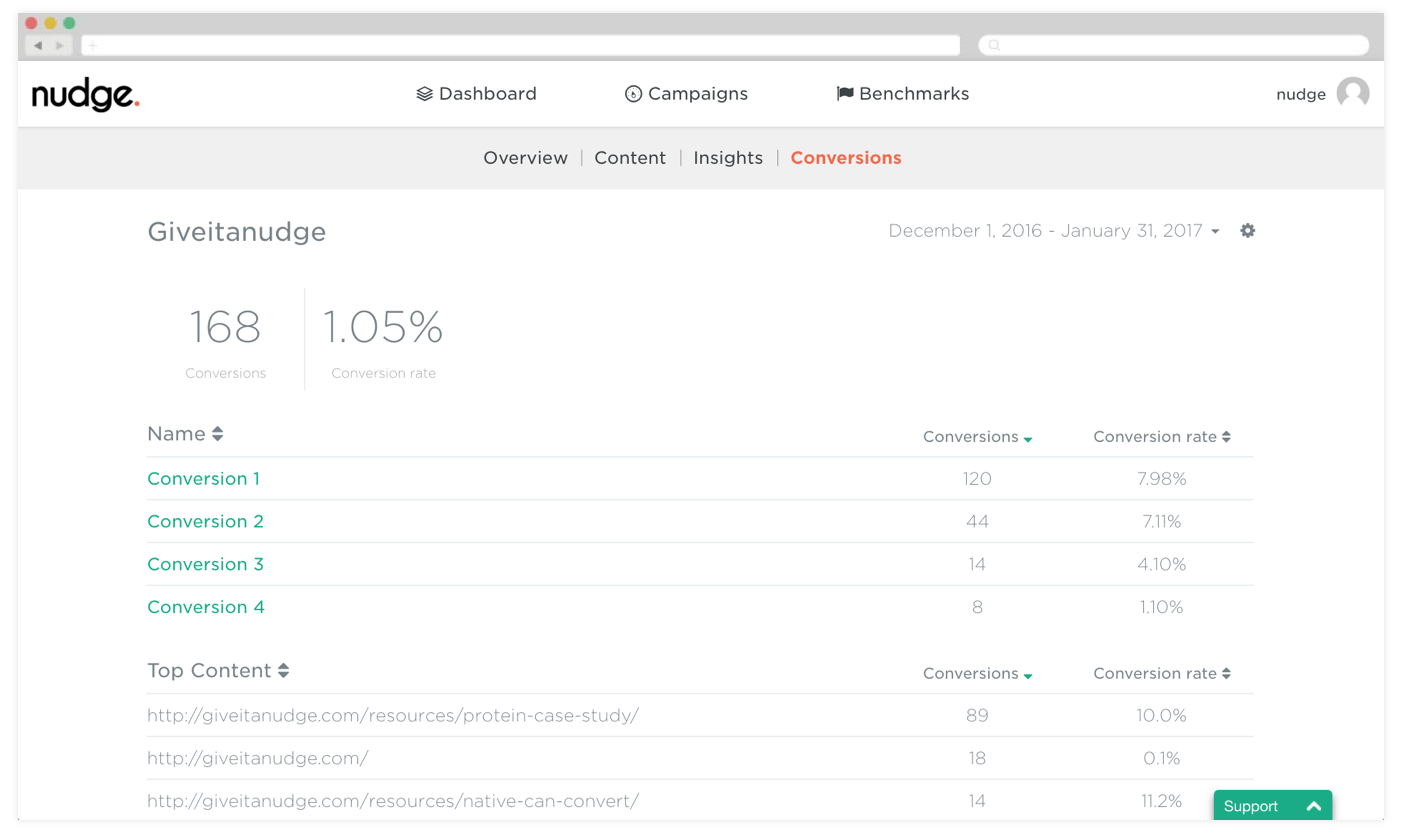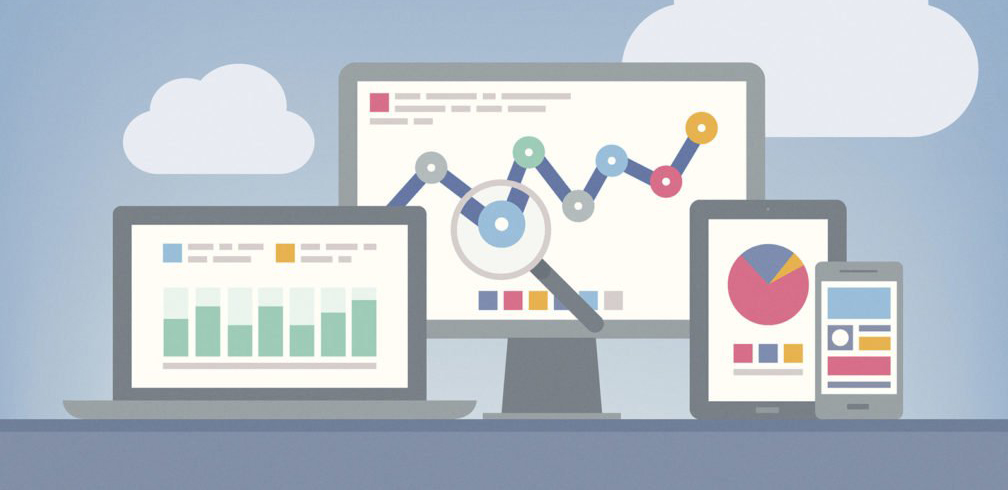Proving that consumers take action is the ultimate proof point. Marketers are too often lead to believe that a conversion has to be a final step in the buyer journey; that’s not entirely true. ROI metrics has been, and still is the number one problem for content marketers. However, this is no longer the case for Nudge customers (read more about it here: Native Can Convert).
Conversion is the ultimate proof point that a campaign has been successful, however, If you’re unable to use conversions in your campaign, I urge you to take a look at Nudge benchmarks and/or post-click metrics, as they’re definitely your best alternatives.
Speak to a member of the team to learn more.
How we think about conversion and attribution
Nudge supplies an additional conversion pixel to be placed on a brand’s site, allowing Nudge to measure conversions up to 60 days after a user has read a piece of content. The platform gives marketers the tools to quickly see at a glance what content and distribution sources are driving conversion and understand what people do after they’ve read a piece of content.
(Attribution is a post-click metric. In order to fully understand how your campaigns are doing, you can learn more here.)
Examples of different types of conversions:
- Purchase
- Visiting a brand
- Product page
- Revisiting a page/site

How to use attribution to measure purchase intent
For brands where the purchase happens in multiple channels, offline & online. And longer purchase cycles.
Purchase intent behaviour can work as a proxy. For example, a brand can assume that the best indicator of a purchase is a user going to a product page and exploring their options. By understanding your audience, you can look at specific parts of your formulated conversion ladder and make necessary changes that optimizes conversion. With Nudge you can see your best performing content via benchmarks, and how it performs in relation to your industry. You’re able to tag different user behaviours to see within a 60-90 window what content/traffic sources that actually drives conversion.

How it works for brand campaigns
“If I’m doing a brand campaign, should I worry about conversions?”
Yes. The attribution method verifies that you’re reaching the right audience by allowing them to demonstrate a certain level of purchase intent. But it also gives marketers a benchmark that shows which partners’ content resonates with their audience. For example, if you’re an advertiser and you’re working with 4-5 publishers and one publisher is pushing 3-4 times more conversions than the others (but with similar results through other metrics), you’ll want to keep going with that publisher.
See it in action: Nudge + The Atlantic – Case Study
Nudge partnered with the Atlantic, a leading publisher, to represent a leading healthcare provider. The partnership focused on innovating around attribution, to understand what measurable actions that happened after people consumed the content. By integrating Nudge, The Atlantic learned what was performing in real-time, from an easy-to-use dashboard.
We looked at:
- Which content converted
- Which distribution partners were most fruitful
- Average time to convert
The client learned that one piece of content accounting for 40 percent of conversations, and backed the winning horse by allocating more spend.
You can read more about this partnership here: Native Can Convert.
Example of how you can prove the content ROI of your campaign:
Get in touch to see how Nudge can work for you.
How to optimize for conversion
When a campaign has run you can tell which ones that have been the most successful by looking at conversion data, but by linking this with attribution metrics you’ll find yourself with even richer data and the understanding of what to do next. Nudge Network Benchmarks anticipate that 1-3% of your audience perform a desired action, however, this does vary between industries.

The platform delivers normalized metrics built for purpose; a blend of content, social and advertising KPIs to give an accurate picture of content performance. Two of these metrics highly correlates with conversion, enabling marketers to optimize their campaigns with a deeper understanding of what worked in their campaigns and why.
With Nudge, your team gains insight into your best performing content through a number of important factors including:
- Virality – Percentage of people that come in from a share who share the content again
- Attention – Time that consumers are actively consuming the content
The ‘virality’ metric is built to guide marketers to optimize their earned audience by understanding what causes virality, but also how to convert from it. ‘Attention’ shows marketers their best chance for their content to actually convert. For example, you have recently ran a successful campaign (high conversion), but you also found that you earned really high attention rates from a particular publisher; you can now optimize your next campaign by pushing most of your content via that particular publisher.
By looking at these metrics in correlation with the rest of the Nudge toolkit, marketing teams can begin to optimize conversion but also their distribution. It shows how owned and paid content work in tandem. It also reveals the uplift you will achieve by doing more owned and/or paid content; i.e. where you should spend your time and resources. For example; if you were to put owned content and paid content on a publisher site, you’re able to quickly interpret which performs better through the Nudge dashboard.
Nudge’s attribution methodology helps you…
- Understand the contribution of content to conversion
- See the uplift of specific piece of content over another and how distribution affected it
- Strategically figure out where to spend time and resources
- Remove unknowns in your campaigns to understand what is/isn’t working
Content is not a banner ad, if you’re only measuring who’s clicking through to buy your product you’re missing out valuable information. In order to optimize conversion, it’s about looking at attribution metrics to understand the complex nature of your audience.
What kind of performance should I expect? -> Speak to an account manager for the latest benchmarks of your particular industry.

|
|---|

